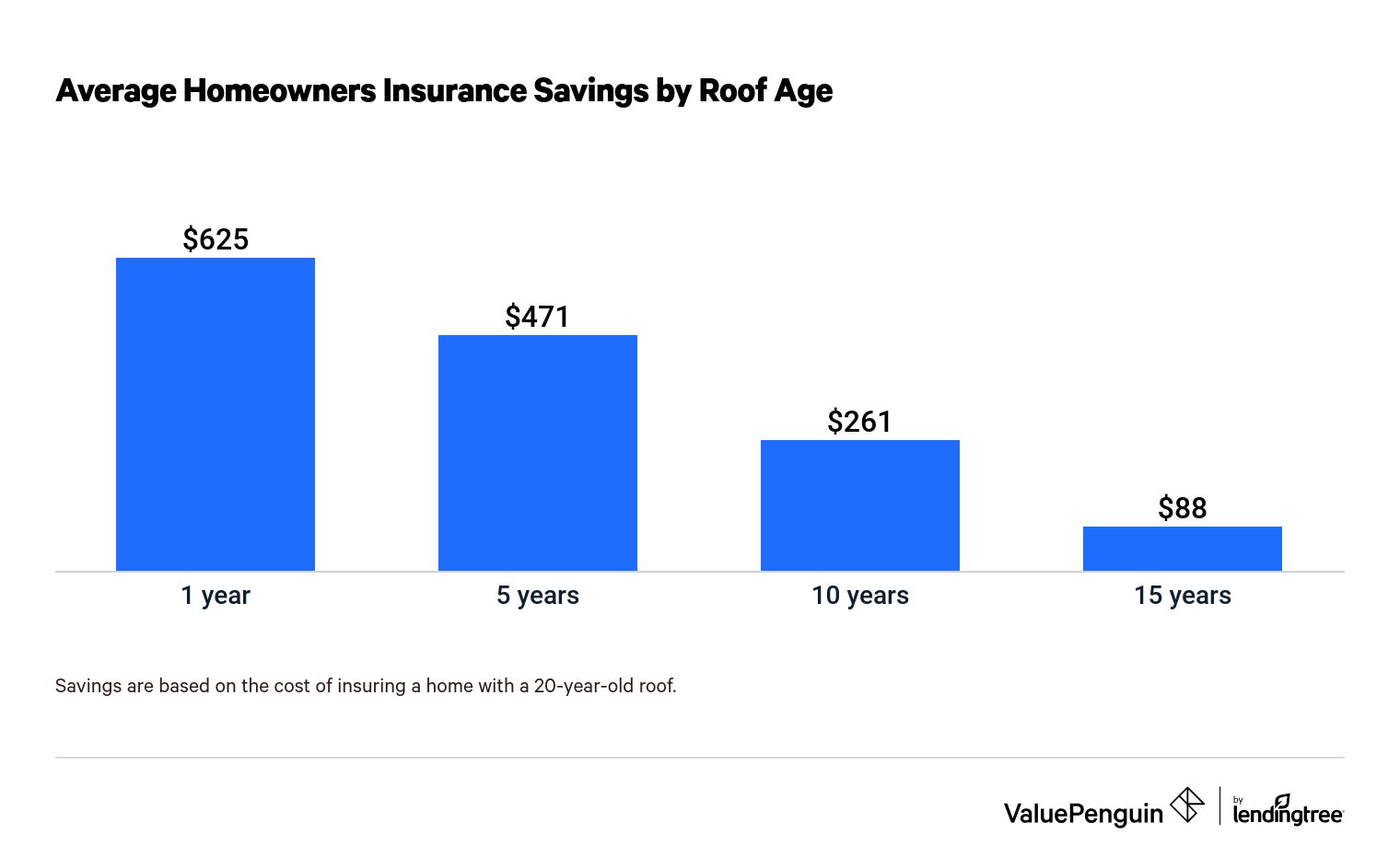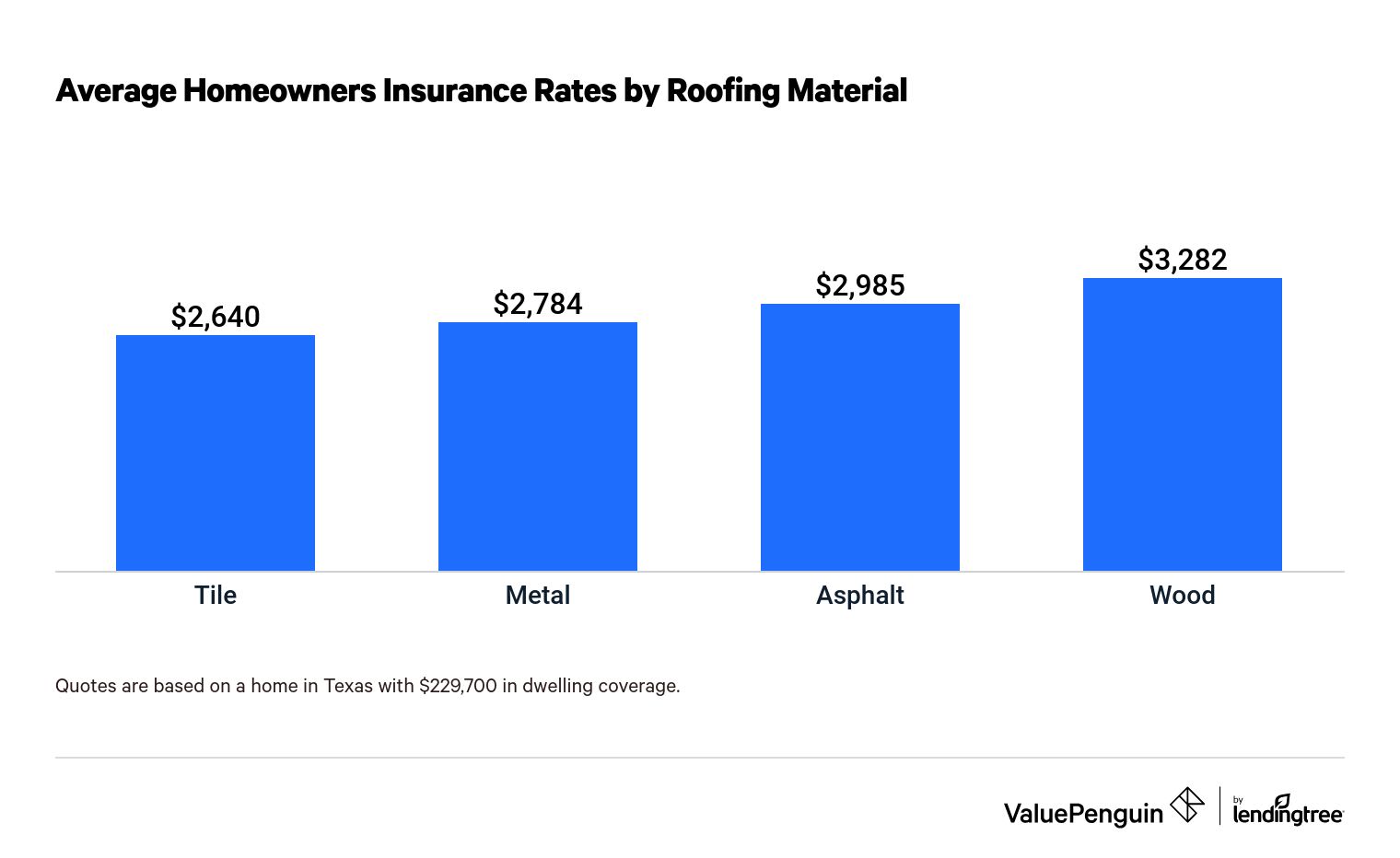Can Renovating Your House Lower Your Insurance Costs?
Find Cheap Homeowners Insurance Quotes in Your Area
Depending on the type of work done, a home upgrade can raise or lower the cost of coverage for your property. Replacing a 20-year-old roof will earn you an average savings of $625 a year or 21%, but upgrading your siding material can raise your rates by up to 5%.
Features that strengthen your house can lower the likelihood of damage and get you a discount on your insurance. On the other hand, improvements that enhance your property value may require a higher dwelling coverage limit, resulting in higher rates.
We compared online quotes from seven major home insurers to find out how some of the most popular home improvement projects can affect your insurance costs.
Key findings
- Replacing an old roof had the greatest measurable insurance impact, reducing premiums by up to 21%.
- Similarly, swapping a standard asphalt roof for sturdier materials like metal or tile also lowered home insurance costs.
- Exterior building improvements can lessen the chance of damage, but the cost of materials tended to cancel out any reduction in the cost of dwelling coverage.
- Enhanced home security systems for fire and burglary did not lead to meaningful savings on homeowners insurance.
New roof home insurance rates
Roof work has a greater effect on insurance costs than any other category of improvements we considered. Our research indicated that on average, a home with a brand-new roof costs $363 per year less to insure than a 10-year-old roof.

Find the Cheapest Home Insurance Insurance Quotes Near You
Average homeowners insurance savings by roof age
Roof age | 1 year | 5 years | 10 years | 15 years | 20 years |
|---|---|---|---|---|---|
| Annual premium | $2,412 | $2,565 | $2,775 | $2,949 | $3,036 |
| Savings ($) | $625 | $471 | $261 | $88 | - |
| Savings (%) | 21% | 16% | 9% | 3% | - |
Savings are based on the cost of insuring a home with a 20-year-old roof.
Roof material and annual home insurance costs
The material used to build a roof affects your homeowners insurance premium. Sturdier materials like metal and tile are less susceptible to hail or wind damage and leaks, meaning that homeowners are less likely to file a claim.

Average homeowners insurance rates by roof material
Roof type | Annual premium | Change in cost ($) | Change in cost (%) |
|---|---|---|---|
| Tile | $2,640 | -$345 | -12% |
| Metal | $2,784 | -$201 | -7% |
| Asphalt | $2,985 | - | - |
| Wood | $3,282 | +$297 | +10% |
Change in cost represents the difference in price from the most common roofing material, asphalt.
A house with a metal or tile roof cost substantially less to insure than a house with typical asphalt shingle roofing due to its comparatively long expected lifespan.
The roofing material that increases insurance costs the most is wood, which usually requires more maintenance than alternative building materials and has greater vulnerability to damage. According to our data, replacing an asphalt roof with wooden shingles or shakes could raise your annual premium by 10%.
Exterior siding home insurance rates
Aside from boosting curb appeal, upgrading the material of your home's exterior can reduce your risk of damage from leaks and storm debris. However, the higher cost of stronger materials means that you may need a higher — and more expensive — limit in your insurance policy.
Cost per 100 sq ft | Annual premium | Change in insurance | |
|---|---|---|---|
| Vinyl siding | $100-$800 | $2,412 | - |
| Fiber-cement siding | $500-$1,200 | $2,400 | -$12 (-0.5%) |
| Wooden siding | $800-$1,200 | $2,436 | +$24 (+1%) |
| Brick veneer | $500-$1,500 | $2,532 | +$120 (+5%) |
Insurance cost based on quotes for a $350,000 home built in 2004.
The most popular exterior construction for single-family homes in the United States is vinyl siding, which consists of vinyl strips with interlocking edges.
The insurance implications of exterior improvements turned out to be twofold. Choosing a more durable, low-maintenance material means that insurers could see your home as having a lower risk of a claim for dwelling damage. For example, replacing vinyl siding with more durable fiber-cement siding slightly reduced our premium.
However, insurers may also require you to get a higher coverage limit to account for the higher cost of replacing that material if it's damaged. The cost of coverage went up when we substituted wood or brick as the exterior material — both materials cost more than vinyl and raised the dwelling coverage required.
Security system discounts
Some home insurers advertise discounts to homeowners who report having monitoring systems for fires, leaks and burglary. However, our data suggests that the actual savings on your insurance bill may be close to zero, especially when compared to the amount you pay for the devices.
Home security discounts by provider
Insurer | Discount with central fire alarm | Discount with local burglar alarm |
|---|---|---|
| Liberty Mutual | 5% | 1% |
| Nationwide | 1% | 0% |
| State Farm | 4% | 2% |
Based on annual estimates from insurers' web-based quote forms.
When we obtained quotes from five major insurers, we found that two of them — Allstate and Farmers — did not inquire about home security at all within the online quote form. Among the rest, centrally monitored fire alarms led to discounts of 1% to 5%, while adding a local burglar alarm reduced rates by no more than 2%.
Applied to the typical amount that homeowners spend on insurance, the variations we found came out to $14 to $72 saved per year. In comparison, the cost of installing such alarm systems and subscribing to the services that power them can cost thousands on an annual basis.
Methodology
To analyze the effect of roof age and material on insurance costs, we gathered thousands of quotes from ZIP codes across Texas from seven of the largest insurers in the state. Quotes are based on a home built in 1977 with the following coverage limits:
Coverage | Amount |
|---|---|
| Dwelling | $229,700 |
| Liability | $100,000 |
| Medical payments | $5,000 |
| Deductible | $1,000 |
This analysis used insurance rate data from Quadrant Information Services. These rates were publicly sourced from insurer filings and should be used for comparative purposes only — your own quotes will differ.
We analyzed home insurance quotes for a representative address in the U.S. in order to compare the effect of exterior materials and security systems on prices at five major insurers:
- Allstate
- Farmers
- Liberty Mutual
- Nationwide
- State Farm
For each insurance provider, we used the provider's web-based quote form to attain an estimate of annual premiums with different combinations of home characteristics.
The average cost of roof and exterior materials was obtained online from Modernize.
Senior Writer
Lindsay Bishop is a Senior Writer at ValuePenguin, where she educates readers about home, auto, renters, flood and motorcycle insurance.
Lindsay began her career in the insurance and financial industry in 2010. She was a licensed auto, home, life and health insurance agent and held Series 6 and 63 financial licenses.
After a hiatus from the financial sector, Lindsay returned to the industry as a content writer for ValuePenguin in 2021. She enjoys having the opportunity to help readers make smart decisions about their insurance so they can be prepared for anything life throws their way.
When Lindsay isn't writing about insurance, you can find her spending time with family, enjoying the outdoors on Sunday long runs or riding her Peloton.
How insurance helped Lindsay
As a homeowner for 15 years located in South Carolina, Lindsay has plenty of experience navigating the coastal insurance market and managing the claims process. That includes successfully negotiating a full roof replacement claim.
Expertise
- Home insurance
- Car insurance
- Flood insurance
- Renters insurance
- Motorcycle insurance
Referenced by
- CNBC
- Yahoo Finance
- Miami Herald
Education
- BS/BA Economics, University of Nevada Las Vegas
Editorial Note: The content of this article is based on the author's opinions and recommendations alone. It has not been previewed, commissioned or otherwise endorsed by any of our network partners.
